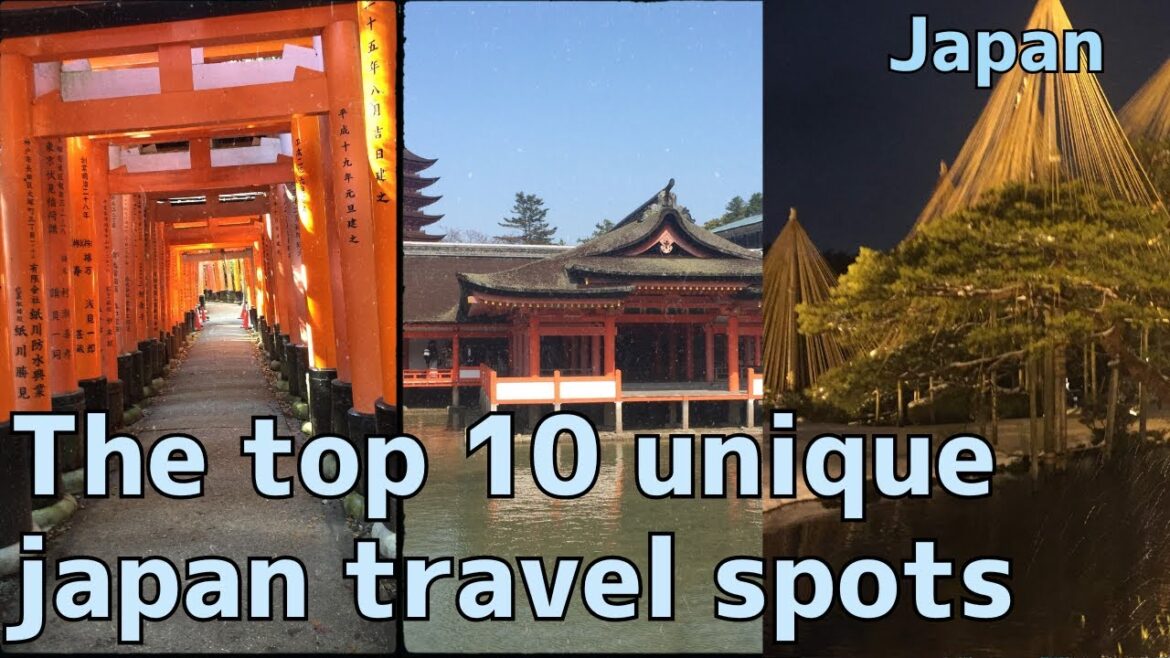the top 10 unique japan travel spots
Fushimi Inari Shrine, Kyoto:
Fushimi Inari Shrine is not just a religious site but a mesmerizing journey through thousands of torii gates, forming the Senbon Torii. The gates lead up to the sacred Mount Inari, creating a spiritual and visually stunning experience. The vibrant red gates against the lush greenery of the forest make this a photographer’s dream.
Hokkaido Lavender Fields:
The lavender fields in Furano, Hokkaido, are a sensory delight. Stretching as far as the eye can see, the vibrant purple hues of the lavender contrast against the surrounding greenery and the distant mountains. The air is filled with the soothing aroma of lavender, creating a peaceful and picturesque atmosphere.
Miyajima Island, Hiroshima:
Miyajima, or Itsukushima, is a mystical island known for its iconic “Floating Torii Gate.” During high tide, the gate appears to float on the water, creating a magical scene. The island is also home to friendly deer that roam freely, adding a touch of enchantment to this Shinto pilgrimage site.
Tottori Sand Dunes:
Tottori Sand Dunes are a unique natural wonder in Japan. The vast expanse of sand, shaped by wind over centuries, creates a surreal desert-like landscape. Visitors can enjoy activities like sandboarding or simply marvel at the panoramic views of the Sea of Japan.
Koya-san, Wakayama:
Koya-san is a serene mountain town and a spiritual retreat. It is the headquarters of Shingon Buddhism and is adorned with ancient temples and towering cedar trees. Okunoin, the largest cemetery in Japan, is a meditative walk among moss-covered tombstones and centuries-old trees.
Naoshima Art Island:
Naoshima is a living canvas, seamlessly blending contemporary art with nature. The Benesse House, designed by renowned architect Tadao Ando, houses a museum and a hotel. The island’s outdoor art installations, such as the iconic yellow pumpkin by Yayoi Kusama, turn the entire island into an immersive art experience.
Ouchi-juku, Fukushima:
Ouchi-juku is a preserved post town from the Edo period, featuring traditional thatched-roof houses (Nagaya). The nostalgic atmosphere, with streets lined with these charming houses, transports visitors back in time. During winter, the town is adorned with snow, creating a picturesque winter wonderland.
Shikisai-no-Oka Flower Fields, Hokkaido:
Biei’s Shikisai-no-Oka, or “Hill of Seasonal Colors,” is a patchwork quilt of flowers. During summer, the fields burst into a kaleidoscope of colors, including vibrant tulips and lavender. The undulating hills create a stunning panorama, attracting visitors and photographers alike.
Iriomote Island, Okinawa:
Iriomote, the jungle-covered gem of the Yaeyama Islands, is a haven for nature lovers. Mangrove forests, crystal-clear rivers, and untouched beaches make it an ideal destination for outdoor adventures. Kayaking through the mangroves or trekking to discover hidden waterfalls offer a unique and immersive experience.
Jigokudani Monkey Park, Nagano:
Jigokudani, meaning “Hell Valley,” is a striking landscape of steaming vents and hot springs. The resident Japanese macaques, known as snow monkeys, have made the nearby hot springs their winter retreat. Watching these playful monkeys soak in the warm waters against a backdrop of snow-covered landscapes is a heartwarming and unforgettable sight.
#japan #mustvisit #osaka #tokyo #hokkaido #kanazawa

